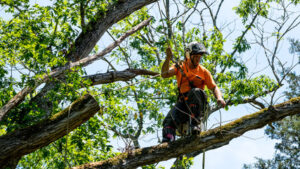Pain is an unavoidable part of life. Whether caused by injury, illness, stress, or wear and tear, most people will experience some form of physical discomfort at various stages in their lives. While modern medicine often focuses on pharmaceuticals and invasive procedures to address pain, there is growing awareness of the benefits of natural pain relief and preventive care. These holistic approaches not only target the symptoms but also address underlying causes, helping people feel better in the long term without heavy reliance on medication.

In today’s fast-paced world, many individuals seek safer, more sustainable solutions for managing their pain and improving their overall well-being. Natural pain relief and preventive care promote healing through lifestyle changes, physical therapy, proper nutrition, alternative therapies, and early detection. Find Out More Here why these methods are gaining traction and how they can transform one’s approach to health and longevity.
Natural pain relief refers to non-pharmaceutical methods of managing and reducing pain. These techniques focus on harnessing the body’s healing mechanisms without relying heavily on prescription medications or surgical interventions. Some common methods of natural pain relief include:
- Exercise and movement therapy
- Massage and bodywork
- Chiropractic care
- Acupuncture
- Stretching and yoga
- Heat and cold therapy
- Mind-body techniques such as meditation and breathing exercises
- Nutritional changes and anti-inflammatory diets
These approaches can be used individually or in combination, depending on the type and severity of pain. While natural pain relief may not eliminate discomfort in all cases, it often reduces symptoms significantly and improves quality of life.
Over-the-counter painkillers and prescription opioids are commonly used to manage pain, but they come with risks. Long-term or excessive use can lead to:
- Dependency and addiction
- Digestive issues and liver damage
- Tolerance, requiring higher doses over time
- Masking of underlying health problems
- Reduced effectiveness for chronic conditions
In contrast, natural pain relief methods often support overall health while treating the root of the pain, rather than just the symptoms. They allow people to maintain function and mobility, avoid side effects, and reduce the risk of developing more serious issues related to pharmaceutical use.
To understand the value of natural pain relief, it’s important to recognize what typically causes pain. While acute pain may result from injury or surgery, chronic pain often stems from deeper, ongoing issues such as:
- Poor posture and musculoskeletal imbalances
- Inflammation from a poor diet or autoimmune responses
- Stress and emotional strain that manifest physically
- Lack of physical activity or a sedentary lifestyle
- Old injuries that never fully healed
- Degenerative conditions such as arthritis
Natural treatments can play a significant role in addressing these causes holistically. For example, strengthening core muscles and correcting posture can alleviate back pain; a plant-based diet can reduce inflammation; and stress-relief techniques like meditation can reduce muscle tension.
Preventive care focuses on identifying and managing potential health issues before they become serious problems. It involves taking deliberate steps to maintain good health through regular checkups, a healthy lifestyle, and mindful self-care practices. Preventive care aims to keep the body in balance, minimizing the need for emergency interventions or long-term medications.
Examples of preventive care include:
- Routine physical activity to maintain joint mobility and muscle strength
- Healthy eating habits that support organ function and energy levels
- Adequate hydration and sleep to allow the body time to heal and regenerate
- Early detection of potential problems through screenings or assessments
- Stress management to prevent chronic tension and its physical consequences
- Posture and ergonomics to avoid repetitive strain injuries
- Regular stretching and mobility work to prevent stiffness and improve flexibility
The earlier these habits are adopted, the more likely they are to prevent the onset of chronic pain or illness.
Natural pain relief and preventive care are not separate strategies—they are deeply interconnected. Pain, especially chronic pain, often signals a deeper issue that has been developing over time. Preventive care aims to detect and address these issues before they escalate, while natural pain relief helps manage symptoms without creating additional health risks.
Here’s how they support each other:
- Addressing Root Causes: Natural pain relief techniques often identify physical or lifestyle factors contributing to discomfort, allowing for corrections that also serve as preventive measures.
- Avoiding Overuse Injuries: Regular movement, stretching, and ergonomic awareness can prevent the repetitive strain injuries that often lead to chronic pain.
- Enhancing Body Awareness: Practices like yoga or physical therapy help individuals become more attuned to their bodies, allowing them to detect early signs of dysfunction or stress.
- Improving Long-Term Outcomes: By avoiding dependence on quick fixes and focusing on whole-body health, people are less likely to experience the long-term side effects of conventional treatments.
Another essential element of natural pain relief and preventive care is the role of the mind-body connection. Chronic pain is not only physical—it can be influenced by emotions, stress levels, and mental health. Many natural approaches emphasize holistic balance, recognizing that emotional and mental well-being can have a direct impact on physical pain.
Practices such as:
- Mindfulness meditation
- Deep breathing
- Progressive muscle relaxation
- Biofeedback
- Cognitive behavioral techniques
They are all proven to reduce the perception of pain, ease muscle tension, and lower stress hormones. A person who practices regular mental wellness techniques is also more likely to stay engaged in healthy lifestyle habits, reinforcing the cycle of prevention and healing.
Nearly everyone can benefit from natural pain relief and preventive care, but especially:
- People with chronic conditions such as arthritis, fibromyalgia, or migraines
- Those recovering from injuries who want to heal without dependency on medications
- Older adults looking to maintain mobility and quality of life
- Athletes or active individuals aiming to prevent overuse injuries
- Office workers dealing with neck and back pain from long hours of sitting
- People under high stress who experience tension-related discomfort
It’s important to note that these methods don’t exclude conventional care. They work well alongside traditional medicine, offering a more complete and sustainable path to wellness.
Natural pain relief and preventive care are essential tools for building a healthier, more resilient body. Rather than masking symptoms, they focus on healing the root cause, supporting long-term wellness, and minimizing the need for pharmaceuticals or invasive procedures. These approaches encourage individuals to take an active role in their health, emphasizing balance, movement, nutrition, and mental well-being.
By incorporating simple, consistent habits and paying attention to the body’s signals, people can reduce the risk of chronic pain and avoid the cycle of dependence on temporary fixes. Whether used on their own or as a complement to other therapies, natural methods of pain management and proactive care offer powerful benefits that contribute to a life of strength, comfort, and vitality.

